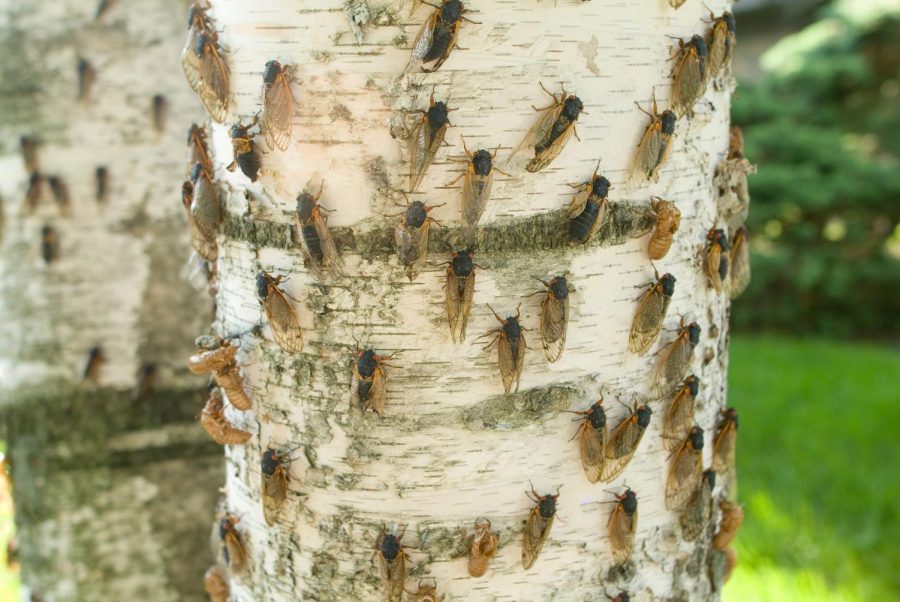On Friday evening, more than 90 people from Virginia, Maryland, Tennessee, North Carolina and South Carolina gathered in Benson 401 for Wake Forest’s 34th annual Perspectives in Biology Symposium. Based on the amount of excited conversation, wine and laughter circulating the room, you might never have guessed that this was a highly technical biology lecture — except perhaps for the PowerPoint title slide labeled “Deep subsurface life in the Costa Rica subduction zone from hot springs to volcanoes.”
But once the discussion died down and Dr. Karen Lloyd began her evening lecture, the biology became very important as she described her experiences studying microbes on glaciers near Svalbard and trekking into hot springs along Costa Rica in order to find microbes living at scalding temperatures and pH values between zero and one. There was a triumphant moment when Dr. Lloyd was able to display her data superimposed almost perfectly along an expected curve and exclaimed “Holy crap, it’s not all crap!” to the laughter and applause of the room.
Since 1985, the Perspectives in Biology Symposium at Wake Forest has been hosting this mixture of intense scholarship and community for biologists.
“The lectures are always great,” said Kimberly Zahn, a biology professor at Thomas Nelson Community College in Hampton, Virginia, “but half of the reason we are all here is not just to learn something new, but also to get to see everyone, talk, and have a good time.”
What brings a community college professor from Virginia to Wake Forest for a two-day biology symposium?
“If you think back 34 years ago when this symposium was started,” explained Dr. Miles Silman, a member of Wake Forest’s Biology Department and the coordinator of this year’s symposium “science was a lot harder to access, especially for institutions without a research focus. So Wake Forest wanted to bring these schools from around the Carolinas to get together and share.”
Despite the differences today and the proliferation of scientific literature through the internet, the symposium continues to bring in attendees thanks to the community it has developed, and in part due to its relative affordability at $90 per attendee.
“A lot of community college and technical schools don’t have research centers or the funds to send faculty to large national conventions, which can make it difficult to stay as informed as possible,” said Charlie Shaeff, a biology professor from Central Virginia Community College in Lynchburg. “This symposium is really our only affordable way for professors to get subject specific professional training which we can then bring back to our classrooms and include in our teaching.”
Shaeff, a member of Wake Forest’s class of 1971, is an “expert attendee” of the symposium.
“I haven’t missed a year since it began. For me it’s like a homecoming every time. And slowly, over the years, I’ve told people about it and they’ve started coming too. Now, this is my main way to know I’ll see some of my colleagues every year.”
Many professors from a wide range of different alma maters seem to agree that this conference has major benefits.
“I come every year, regardless of the speakers or their topics,” said Zahn. “There’s value here for everyone.”
This year’s speakers included Dr. Lloyd, a professor of microbiology at the University of Tennessee, Knoxville who focuses on archaebacteria surviving in some of the most intense environments on Earth, Dr. Stephen Goodwin of the University of Oxford, whose talks focused on the underlying genetic mechanisms of sexuality in fruit flies, and Dr. William Schlesinger, President Emeritus of the Cary Institute of Ecosystem Studies and former Dean of the Nicholas School of the Environment, and James B. Duke, Professor of Biogeochemistry at Duke University as well as one of the world’s foremost biogeochemists.
“The goal is to stretch the boundaries of biology — bring people in from these far reaches of the field and have them present side-by-side,” said Silman.
The traditional format for PIB has each of the three speakers present two talks at the symposium.
The first generally offers a more broad perspective on the speaker’s particular field of research while the second provides a deeper dive into some of the more technical aspects and explores what a single study might include.
Even in the most technically focused presentations, however, each presenter maintained the spirit of the symposium and found a way to earn laughs from the audience. Dr. Goodwin provided a video of the hijinks that can result from playing with a fly’s sexual neurology, Dr. Schlesinger pondered if creating replicate Earths for a traditional independent and dependent variable approach to climate change could finally influence policy, and Dr. Lloyd waxed about how much beauty she found when data match a perfect Rayleigh curve.
There was one notable absence from this symposium — undergraduate students.
“This program was initially created with a focus on bringing in faculty from other schools,” said Silman. “We are at the point now where I would love to potentially open it to a broader Wake Forest audience.”
Some attendees agreed that the talks could be opened up to an undergraduate population, but with some stipulations.
“I think that it is important for the focus to remain on bringing these faculty together,” said Martin Zahn, also a biology professor at Thomas Nelson Community College. “That was the spirit of the creation of this symposium and it is something unique that needs to be kept alive.”
As for Shaeff — “I’ll keep coming back to my alma mater each year as long as I can. That’s the beauty to teaching, it allows you to be a student for the rest of your life.”







